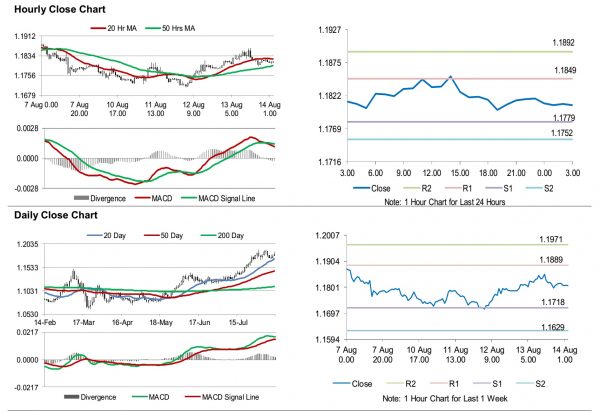For the 24 hours to 23:00 GMT, the EUR rose 0.25% against the USD and closed at 1.1817.
On the macro front, Germany’s consumer price index fell 0.1% on a yearly basis in July, compared to a rise of 0.9% in the prior month. The preliminary figures had also indicated a fall of 0.1%.
The dollar declined against its major peers, after the Congressional Democrat failed to negotiate for additional US coronavirus aid package.
In the US, initial jobless claims unexpectedly dropped to 963.0K in the week ended 7 August 2020, more than market consensus for a drop to a level of 1120.0K. In the prior week, initial jobless claims had recorded a revised reading of 1191.0K.
In the Asian session, at GMT0300, the pair is trading at 1.1807, with the EUR trading 0.08% lower against the USD from yesterday’s close.
The pair is expected to find support at 1.1779, and a fall through could take it to the next support level of 1.1752. The pair is expected to find its first resistance at 1.1849, and a rise through could take it to the next resistance level of 1.1892.
Going forward, traders would keep a watch on Euro-zone’s gross domestic product for 2Q 2020, along with trade balance for June, slated to release in a few hours. Later in the day, the US retail sales and industrial production, both for July, along with the Michigan consumer sentiment index for August and business inventories for June, would keep investors on their toes.
The currency pair is trading between its 20 Hr and 50 Hr moving averages.















